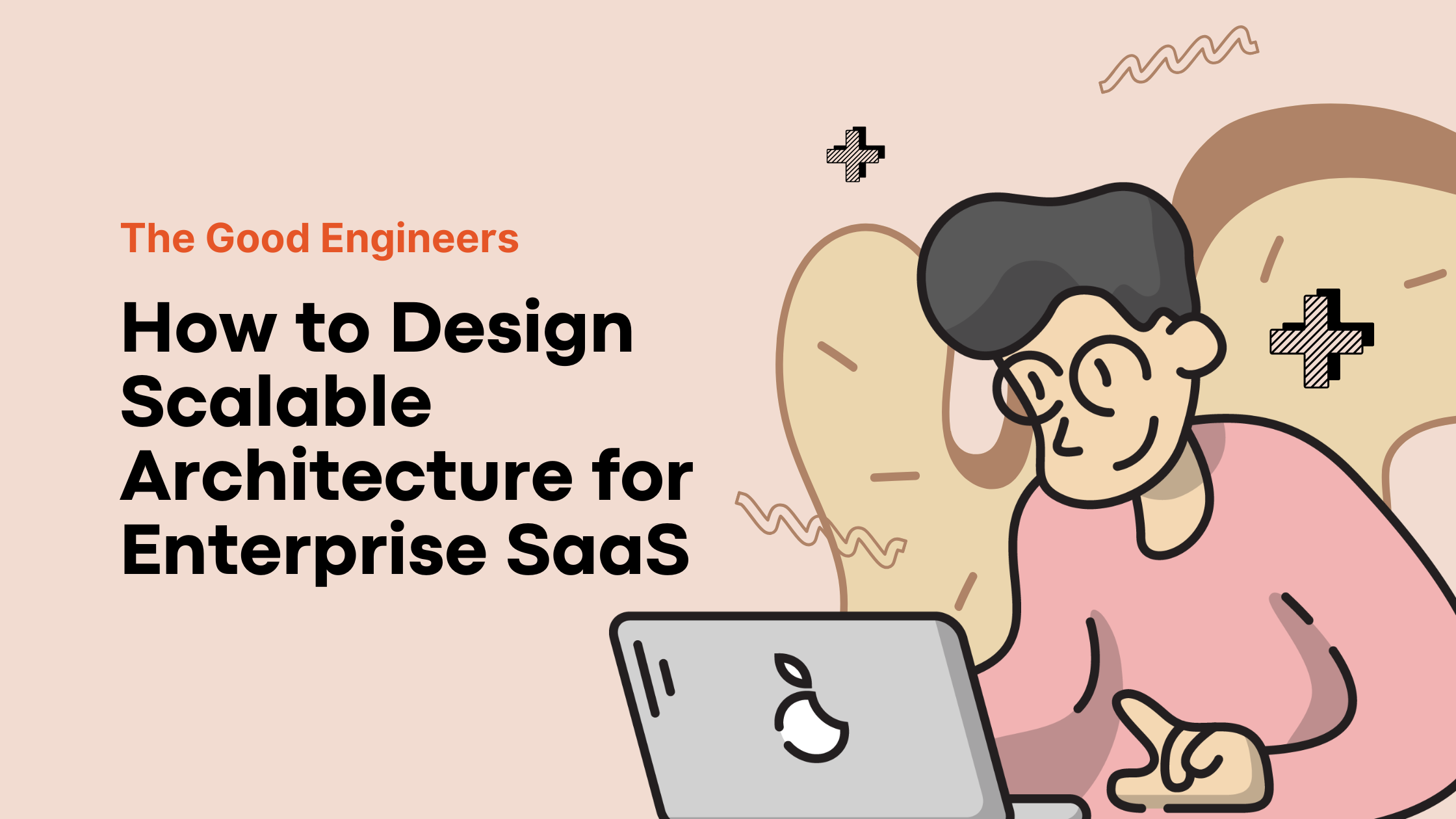How to Design Scalable Architecture for Enterprise SaaS

Designing a scalable architecture for enterprise SaaS is both an art and a science. Over the last 20 years, I’ve worked on building enterprise saas applications, modernizing legacy systems, and leading teams that deliver mission-critical SaaS platforms. In this post, I want to share a clear and battle-tested approach to SaaS architecture that scales with your business.
What Makes Enterprise SaaS Architecture Different?
Enterprise SaaS systems are not just multi-user web apps. They must:
- Support multiple customers (tenants) securely and in isolation
- Scale from 10 to 10,000+ users
- Integrate with complex business workflows
- Support compliance (SOC2, GDPR, etc.)
- Handle high availability, observability, and failover
This adds layers of complexity that require clear architectural thinking from day one.
Key Principles of Scalable SaaS Architecture
Here are foundational principles I always follow when designing for scale:
1. Separation of Concerns
Split responsibilities across distinct layers:
- API Layer: Stateless REST or GraphQL endpoints
- Application Layer: Handles use cases, orchestration, rules
- Domain Layer: Encapsulates core business logic
- Infrastructure Layer: Deals with DB, queues, storage, etc.
Following Clean Architecture or Hexagonal Architecture is a great way to enforce this.
2. Tenant Isolation
Choose between:
- Shared Database with Tenant ID (simpler, more efficient)
- Database-per-Tenant (better isolation, more complex)
- Hybrid (shared for common data, isolated for sensitive modules)
For most enterprise SaaS platforms, I recommend starting with shared DB + soft isolation, and then evolving as needed.
3. Asynchronous by Default
Use queues (e.g., RabbitMQ, SQS) for non-blocking tasks like:
- Sending emails
- Processing uploads
- Updating analytics
- Triggering webhooks
This decouples modules and makes the system resilient under load.
4. Horizontal Scalability
Design everything to scale horizontally:
- Stateless Services: Scale out web/API nodes easily
- Containerization: Use Docker + ECS/Kubernetes for orchestration
- Externalize State: Use Redis, PostgreSQL, S3 for persistence
Avoid single-instance dependencies unless absolutely necessary.
5. Centralized Configuration & Secrets
Use a system like:
- AWS SSM or Parameter Store
- Azure Key Vault
- HashiCorp Vault
This makes your apps 12-factor compliant and environment-agnostic.
Key Components of a Scalable SaaS Stack
Based on real-world enterprise SaaS platforms we’ve built at Facile Technolab, here’s a reference stack:
| Layer | Tech Examples |
|---|---|
| Frontend | React, Angular, Blazor, Next.js |
| API Layer | ASP.NET Core Web API |
| Identity | OAuth2 / OpenID Connect with Azure AD B2C / Cognito |
| Multi-Tenancy | Custom middleware, SaasKit, or Finbuckle |
| DB | PostgreSQL or SQL Server with Dapper / EF Core |
| Messaging | AWS SQS, Azure Service Bus, RabbitMQ |
| File Storage | Amazon S3, Azure Blob |
| CI/CD | GitHub Actions / Azure DevOps |
| Infrastructure | AWS ECS / Azure App Services / Kubernetes |
Use what your team is comfortable with—but keep modularity in mind.
Architectural Patterns That Work
Here are a few patterns I use often:
Modular Monolith
Great for startups and early-stage products. Keeps everything in one codebase, organized by modules.
Evolves well into microservices when needed.
Service-Oriented Modules
Keep bounded contexts as separate projects or services within the same solution.
Use messaging for communication between them.
API Gateway + Backend for Frontend (BFF)
Helps when you have multiple frontend clients—web, mobile, partner portals.
Use tools like YARP (in .NET) or NGINX.
SaaS-Specific Challenges (And Solutions)
1. Custom Features per Tenant
Use feature flags or configuration per tenant. Tools like LaunchDarkly or custom DB-driven toggles help.
2. Throttling & Rate Limiting
Protect your APIs from noisy tenants using rate limits per token or tenant ID.
3. Onboarding & Offboarding Automation
Use workflows to automate customer lifecycle events—provisioning, data deletion, etc.
My Real-World Lessons
- Start simple. Avoid premature microservices.
- Automate as much as possible, especially CI/CD and infra provisioning.
- Invest in observability early, logs, metrics, alerts.
- Design for compliance from day one, encrypt everything, audit everything.
- Talk to customers often. Don’t just build scalable tech—build scalable value.
Final Thoughts
There’s no “one-size-fits-all” SaaS architecture. But there is a mindset and methodology that works, modular design, stateless services, tenant-aware architecture, and observability-first practices.
If you’re building an enterprise SaaS platform or thinking about it,start with clarity on your business needs, then evolve your architecture as you grow.
I’ll be covering specific technical deep-dives on multi-tenancy, security, DevOps, and scaling teams in future posts. Stay tuned!
Want more posts like this on software engineering, .NET, C#, Web Development and SaaS? Subscribe for weekly insights.
